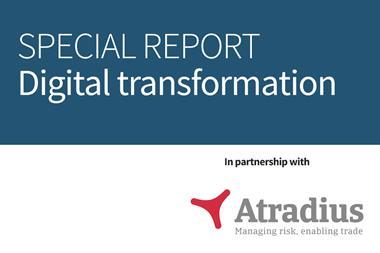The number of captives and similar structures exceeds 5,000 and there is also great interest in captives obtaining financial strength ratings. Conference Times questions Clive Thursby of ratings agency AM Best about these developments
How buoyant is the captive sector?
Taking start-ups as the measure, the captive market is probably growing as fast as ever – 462 new captives were registered in 2002, compared with 316 the year before, and 2003 has also started strongly.
This activity could be a reaction to the difficult market conditions that have adversely impacted most corporate insurance programmes. What is perhaps more remarkable is that this growth has been achieved despite it not having been easy to implement captive solutions, owing to restricted fronting and reinsurance capacity.
What trends do you notice?
There are several notable features. Most captives are of US origin and, increasingly, most new ones are too. And because more US states now have captive-friendly regulations, more of these captives are been formed onshore.
A recent development is the increasing use of cell captives, first introduced in 1997. Many other domiciles have followed suit since. There are over 150 cell companies with 600 plus cells in operation. Their appeal relates to speed of set-up and lower unit costs. And while new captives are being formed at an accelerating rate, the closure of now defunct captives has also been running at record levels.
Has the AM Best's Captive Directory changed to reflect this dynamic scene?
The Directory began life in 1976 as a simple listing. At the time that AM Best acquired the publication from Tillinghast-Towers Perrin in 1999 it had 4,135 entries. Today it has 5,004. We have enhanced the directory's database and the sources of information. Last year we converted it to an online service within the AM Best Captive Center on our website (see www.ambest.com/captive/). Users can now search for captives according to various criteria, accessing information that is being continually updated. We are expanding the scope of the details provided, and already there is considerable financial information about those captives with an AM Best rating.
Why would a captive want a rating?
Five years ago the answer might have been framed in terms of US market practice. It is very rare for a US insurer not to carry an AM Best rating and, therefore, risk retention groups and self-insured pools often did likewise. Today, however, it is recognised that captives of all types can benefit from a rating. We've identified 25 sources of value that can be derived from a rating on a captive and, in practice, several are likely to apply in any one case.
They fall into two main categories. First, a rated captive should find it easier to deal with the conventional market. Fronting and reinsurance capacity may be engaged more effectively and on better terms. For example, we've seen that an AM Best rating can help a captive reduce the collateral requirements of its fronting arrangements.
A second reason why a rating on a captive can count may be explained in terms of corporate governance. In this new age of greater disclosure numerous stakeholders need assurance that the risks in a captive operation are understood and under control. While a rating is not in any sense an audit or a view specific to corporate governance, the rating process does offer an independent view of the company from the perspective of its financial health.Is a rating a practical proposition for any captive?
We anticipate that about a third of all captives would benefit significantly from an AM Best's rating. Other captives would be too small or operate in a way where a rating might have little useful impact. In terms of process, the issues AM Best addresses would typically be consistent with those things that the captive management would focus on in controlling the financial condition of the insurer. Accordingly, little, if any, additional information would really be required. As a consequence, experience suggests that rated captives find the process is not an undue burden. We discuss full details of the process with the captive before it commits to therating process.
Clive Thursby is manager, alternative markets, for AM Best Europe In Conference Times tomorrow AM Best explains the criteria used in rating a captive

















